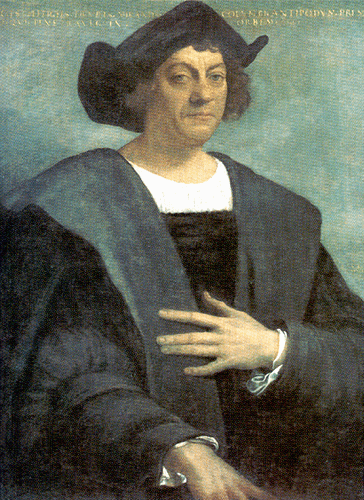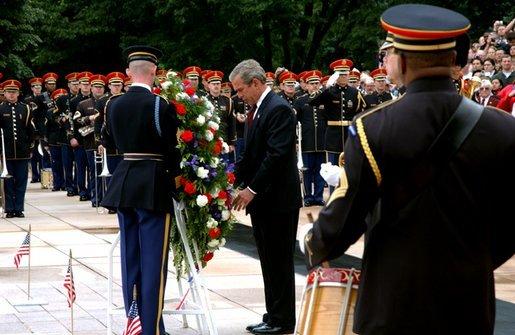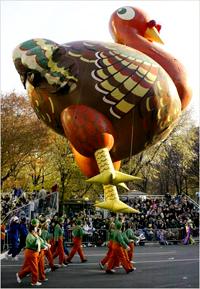
- •Holidays in the usa
- •1. Federal holidays in the United States
- •New Year’s Day
- •Martin Luther King’s Day
- •George Washington’s Birthday
- •Memorial Day
- •Independence Day
- •Labor Day
- •Columbus Day
- •Veteran’s Day
- •Thanksgiving
- •Christmas
- •2. Other holidays in the usa
- •3. Ethnic and religious observances
- •Glossary
- •Comprehension
- •Self-Assessment
- •Further Reading
Columbus Day
T his
daycommemorates Italian navigator Christopher Columbus’
landing in the New World on October 12, 1492. Most nations of the
Americas observe this holiday on October 12, but in the United
States, annual observances take place onthe second Monday in
October.
his
daycommemorates Italian navigator Christopher Columbus’
landing in the New World on October 12, 1492. Most nations of the
Americas observe this holiday on October 12, but in the United
States, annual observances take place onthe second Monday in
October.
The major celebration of the day takes place in New York City, which holds a huge paradeeach year. Over 35 000 marchers participate in theparadewhich travels north along Fifth Avenue from 44th Street to 79thStreet.
Veteran’s Day
Originally called Armistice Day, this holiday was established to honor Americans who had served in World War I. It falls on November 11, the day when that war ended in 1918, but it now honors veterans of all wars in which the United States has fought.
Historical background of the holiday
World War I officially ended on June 28, 1919, with the signing of the Treaty of Versailles. The actual fighting between the Allies and Germany, however, had ended seven months earlier with the armistice, which went into effect on the eleventh hour of the eleventh day of the eleventh month in 1918. Armistice Day, as November 11 became known, officially became a holiday in the United States in 1926, and a national holiday 12 years later. On June 1, 1954, the name was changed to Veterans Day to honor all U.S. veterans.
In 1968, new legislation changed the national commemoration of Veterans Day to the fourth Monday in October. It soon became apparent, however, that November 11 was a date of historic significance to many Americans. Therefore, in 1978 Congress returned the observance to its traditional date.
Current customs and traditions
Veterans’ organizations hold parades or other special ceremonies, and the president customarily places a wreath on the Tomb of the Unknowns at Arlington National Cemetery, across the Potomac River from Washington, D.C.

President George W. Bush lays a wreath at the Tomb of the Unknown Soldier on Memorial Day
Thanksgiving
Thanksgiving Day is the fourth Thursday in November.
Historical background of the holiday
The holiday dates back to 1621, the year after the Puritans arrived in Massachusetts, determined to practice their dissenting religion without interference. After a rough winter, in which about half of them died, they turned for help to neighboring Indians, who taught them how to plant corn and other crops. The next fall’s bountiful harvest inspired the Pilgrims to give thanks to the nature by holding a feast.
The Thanksgiving feast became a national tradition – not only because so many other Americans have found prosperity but also because the Pilgrims’ sacrifices for their freedom still captivate the imagination.
Current customs and traditions
Thanksgiving is a time for tradition and sharing. Even if they live far away, family members gather for a reunion at the house of an older relative. All give thanks together for the good things that they have. In this spirit of sharing, civic groups and charitable organizations offer atraditional meal to those in need, particularly the homeless. On most tables throughout the United States, foods eaten at the first thanksgiving have become traditional.
Turkey, corn (or maize), pumpkinsandcranberry saucearesymbolswhich represent the first Thanksgiving. Now all of these symbols are drawn on holiday decorations and greeting cards. The use of corn meant the survival of the colonies.“Indian corn”as a table or door decoration represents the harvest and the fall season.
Sweet-sour cranberry sauce, or cranberry jelly, was on the first Thanksgiving table and is still served today. The cranberry is a small, sour berry. It grows in bogs, or muddy areas, in Massachusetts and other New England states. The Indians used the fruit to treat infections. They used the juice to dye their rugs and blankets. They taught the colonists how to cook the berries with sweetener and water to make a sauce. The Indians called it “ibimi”which means“bitter berry”. When the colonists saw it, they named it“crane-berry”because the flowers of the berry bent the stalk over, and it resembled the long-necked bird called a crane. The berries are still grown in New England. Very few people know, however, that before the berries are put in bags to be sent to the rest of the country, each individual berry must bounce at least four inches high to make sure they are not too ripe!

Maycy’s Thanksgiving Day Parade balloon Tom Turkey enters New York's Columbus Circle, November 27, 2003
